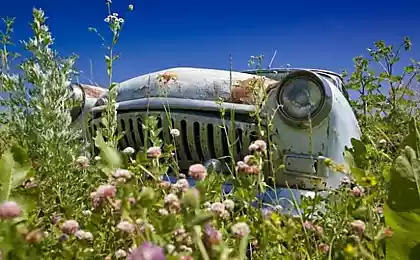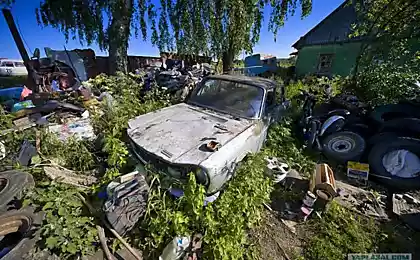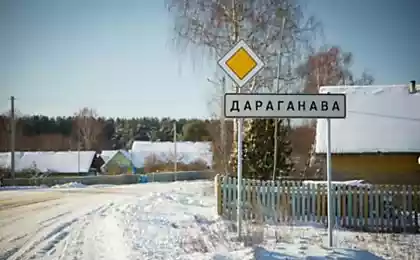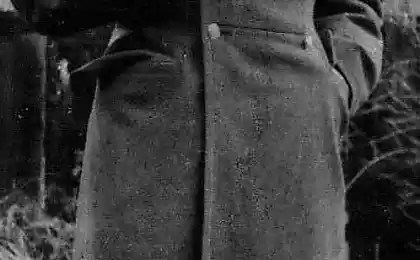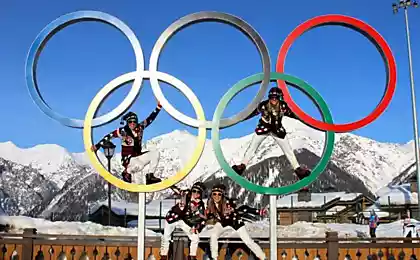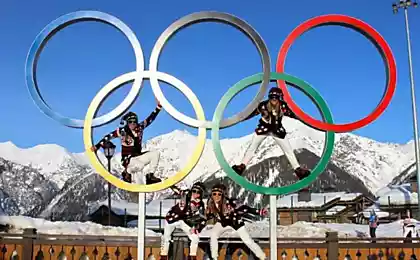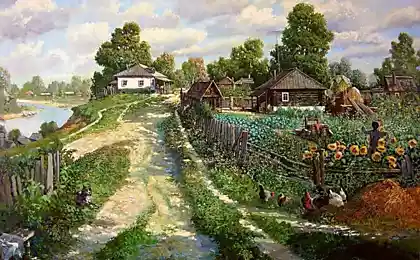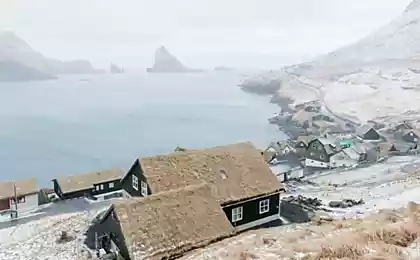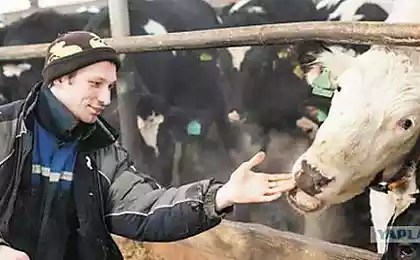2591
Avtomuzey Chernousovo Village (54 photos)
On the high bank of the river in the village Ugot Chernousovo Tula region is unusual avtomuzey that looks like a graveyard of cars. Mikhail Krasinets, a former race car driver AZLK, retired from the sport and began to collect old cars. His first collection passenger cars in scale 1: 1, he placed directly outside her Moscow apartment in the area of the Transfiguration. Shabby assemblage wheeled "veterans" are regularly subjected to devastating raids by surrounding kids - broke windows, doors mangle, burned, and one day, on election day, the authorities have taken just half the collection to landfill. Michael and his wife sold the apartment in Moscow, used the money to buy a few rarities, and left with their cars in the Tula region. Now the museum "Krasintsa" has more than 300 vehicles.

French car "Simca-1501" '68 release.

On the left with the sign - "ZIL-164A", which was issued in 61-65 years. For a long time, these cars were true "workhorses" in almost all fleets of the Soviet Union. On the basis of their specialized plant produces large series vans, tankers, tanks, fire trucks, cranes and many other types of special equipment. Right - "ZIL-157" in the modification of Parma (mobile repair shops). ZIL-157 were produced from 58 to 92 years old, and some of up to 94!
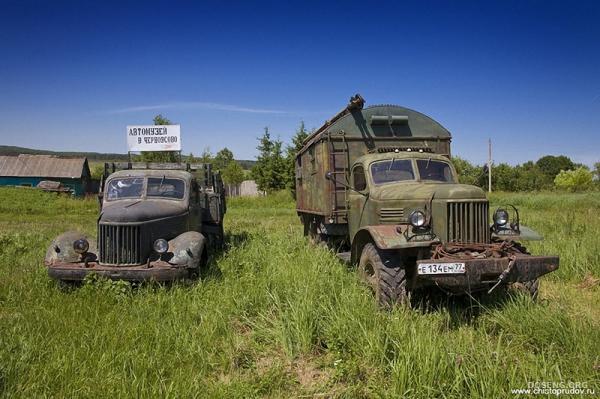
ZIL and Gaza.

Freight car "GAZ-66A" terrain and load capacity of 2 tons. Produced in 64-68 years. Legendary patency due to the use of self-locking differentials, high ground clearance and adjustable pressure in the wheels.
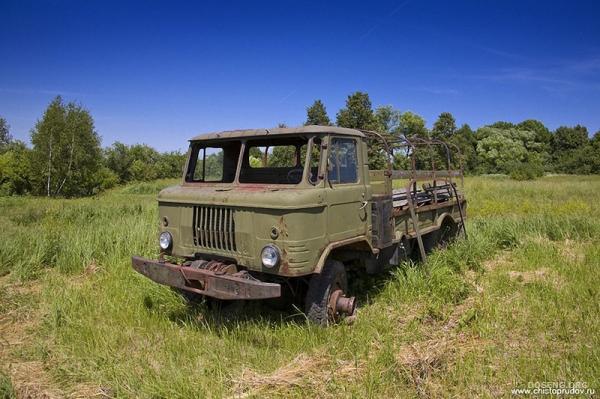
The two-door "Ford Granada" early 80-ies.
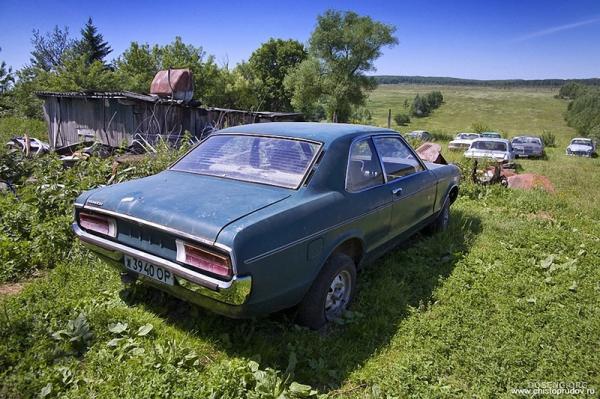
Overgrown grass "Moskvich-401", in the background the family jeep.
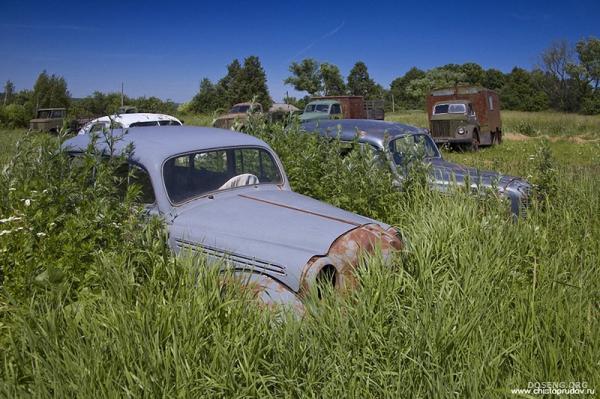
"Moskvich-402".

"Moskvich-423" - the first in the USSR domestic production car with a five-door station wagon, issued in 57-58 years. Engine power of the first wagon was only 35 hp
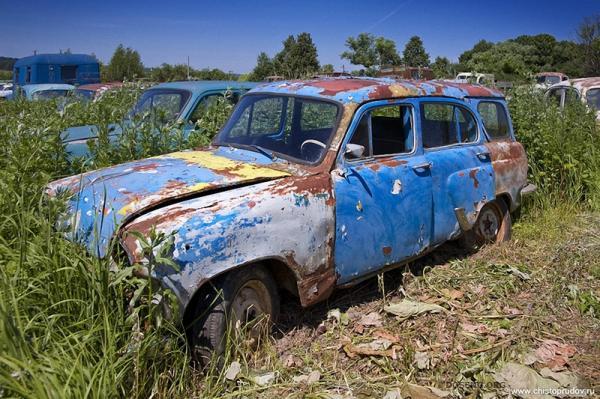
Lonely "Victory", GAZ-M 20.

Lonely "Victory", GAZ-M 20.
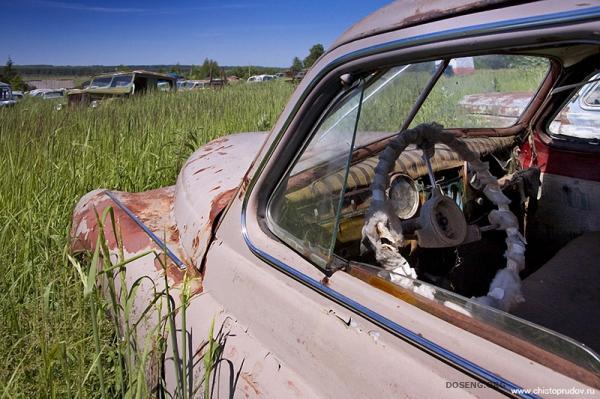
Another "Moskvich".
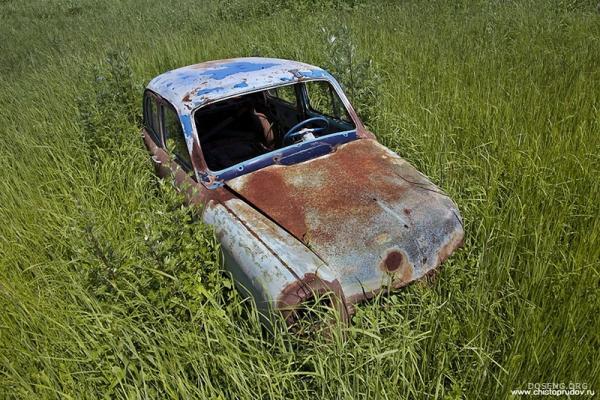
The inscription on the back "Police».
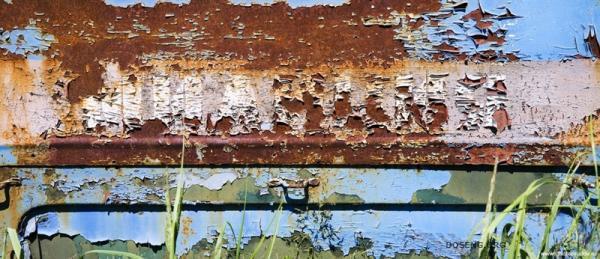
ZAZ-965A "Zaporozhets" or export version "Yalta". This first generation of Cossacks, which produces 60 to 69 c of the year. In the USSR, this car was popular in large part due to the relatively low cost (around three thousand Soviet rubles). In addition, "The Cossacks" differed good cross due to large ground clearance, smooth, flat bottoms and increased load on the driving axle. An interesting feature - the windscreen and the rear window "plows" are used interchangeably. Maximum engine power - 27 hp when the working volume - 887 cc.
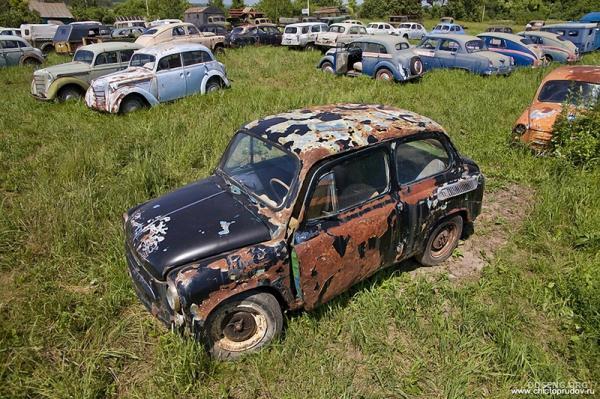
"Moskvich-400". The car is a copy of the pre-war "Opel-Kadett K38". After the war, part of the equipment has been taken out from the factory "Opel" in Rüsselsheim, and the remaining stamps did plant VMS. The rear doors are opened against the motion, not by state standards. "Moskvich-400" was the first in the Soviet Union truly mass people's car, designed primarily for individual owners. In the frame of one of the cars park implements (Department traffic control).
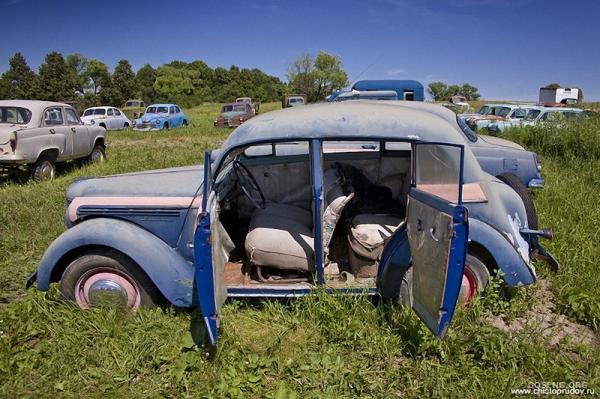
In the postwar years with the launch of production at GAZ-M20 "Victory" was raised by the establishment of new domestic luxury all-terrain vehicle. SUV, called the GAZ-M72, was based on a body "Victory" units of the army and all-terrain vehicle GAZ-69. From the "Victory" for this car were taken only external body panels and a supporting body structure, which was modified and further strengthened.
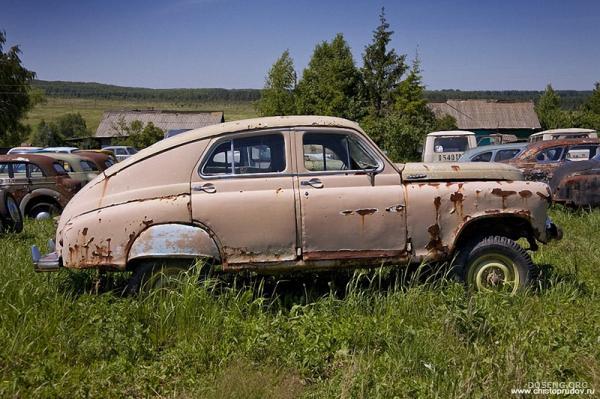
GAZ M-21, the legendary "Volga".
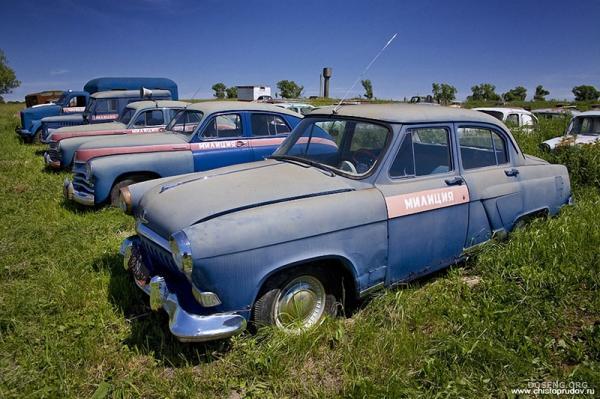
A beautiful view of the Volga.
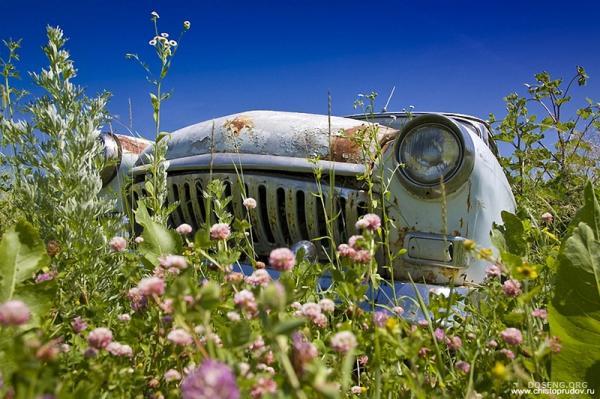
Another "Zaporozhets».
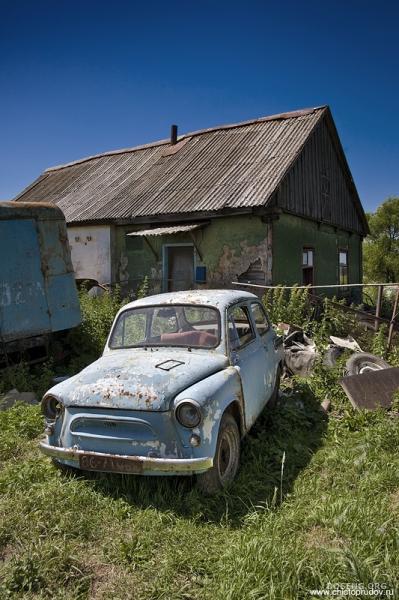
Zaporozhets and Muscovites.
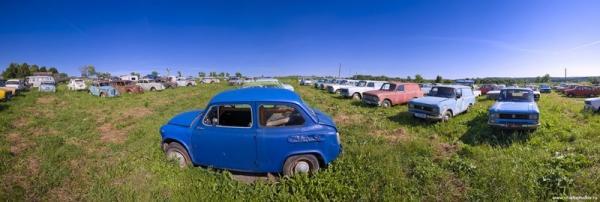
402 and 407 Muscovites. Serial production of "Moskvich-402" was launched in April 1956. For the first time in our automotive industry were used tselnognutye panoramic windshield, telescopic shock absorbers, push-button opening the door locks, unlocks the trunk lid from the inside and dvuspitsevoe steering wheel. The front seats are displayed in a comfortable bed, and the trunk had a large enough amount of - 0, 34 m³. All vehicles were equipped with radio receiver tube range of long and medium waves. Engine power 402nd was 35 hp 407-I model went into production in May 1958, with more than 1960 small and became strong grille. A number of cars for the first time among domestic models have received a two-tone body color, and as a consequence - a good chance for export. After a fairly successful modernization of the engine, the power of which could bring up to 45 hp, the dynamics of the car has improved significantly, and the top speed increased from 105 to 115 km / h.

A small number of "Moskvich-408" made in Izhevsk, and under the brand name "Rila-1400" car produced under license in Bulgaria.

"Opel Rekord C" - one of the rulers of the West German executive cars 67-71 years of release.

"C-3A" subcompact car and microcar 58-70 years of release. It has a tubular space frame and a single cylinder two-stroke motorcycle engine capacity of 10 l / s.
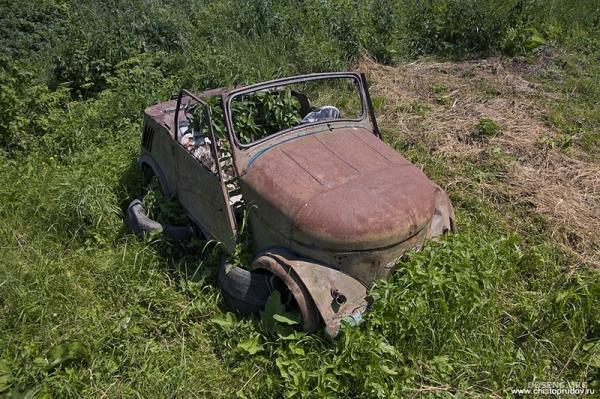
Another microcar - "FDD". Her 18-horseness engine was quite frankly weak for heavy construction of 500 kg and published at the extremely unpleasant crackling.
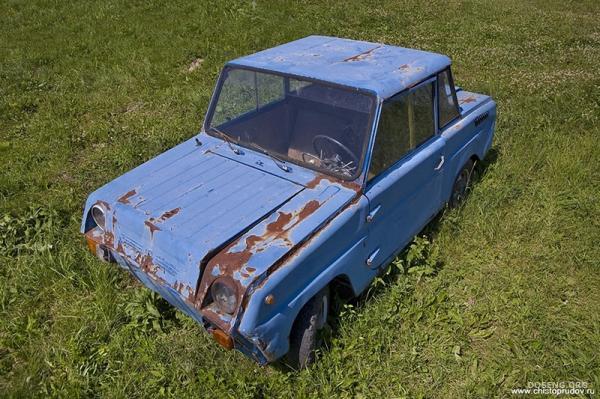
No one pedal.

Single 401st.

Among Muscovites is one of a kind "Wave-407F" - a homemade car made of fiberglass-based "Moskvich-407».
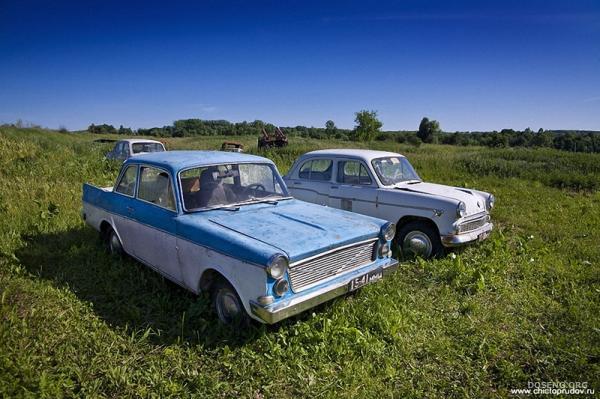
Help on the road.
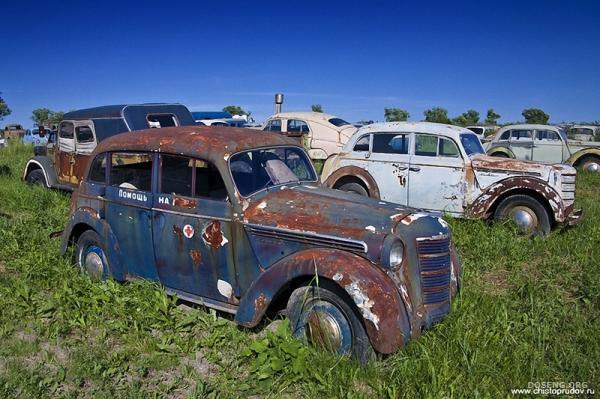
"GAZ-12" or "12-ZIM" - Soviet six-seven-seater car with a body of a large class "shestiokonny long wheelbase sedan." C produces 50 to 60 year. "Winters" - the first representative model of the Gorky Automobile Plant. The car is intended primarily for government and party officials. Private cars were very small, although they freely sold, but the price is about 36,000 rubles was for the vast majority of Soviet citizens is enormous.

The emblem of the Soviet taxi.
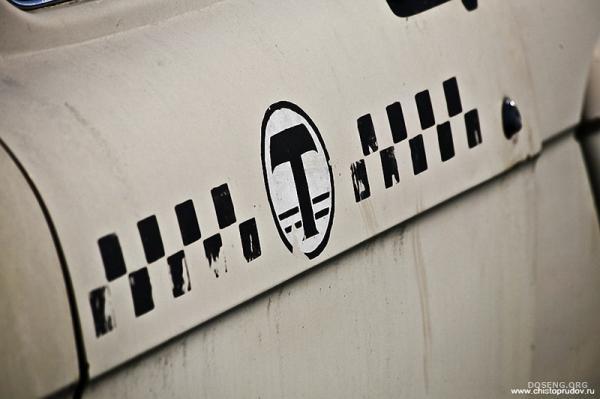
The emblem of the car "GAZ».
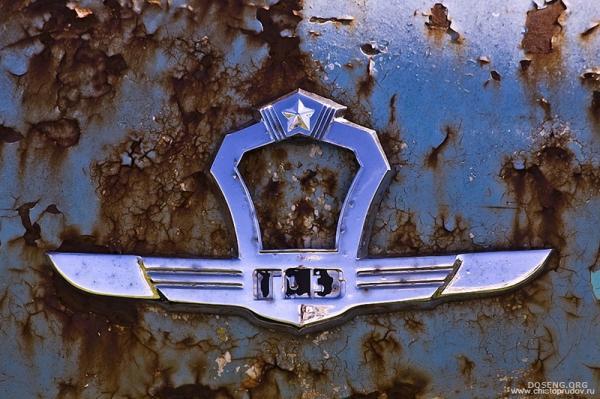
The emblem of the Gorky Automobile Plant to "ZIM-12."
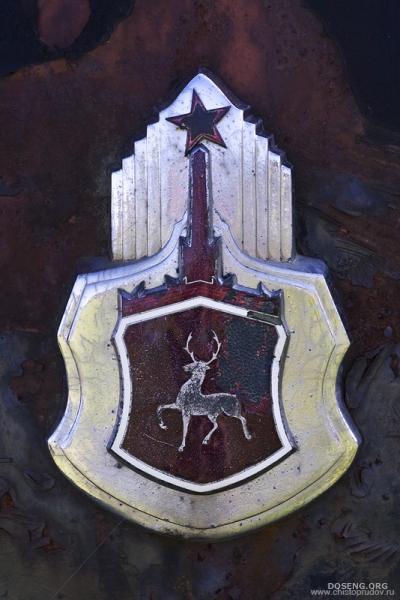
Decorative elements of the "Moskvich-407" on the trunk lid.

... And on the hood.
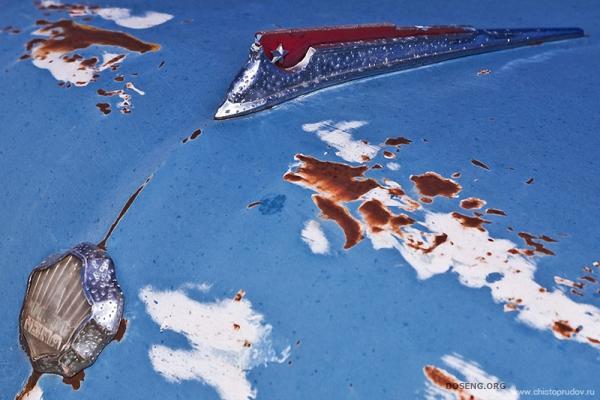
"GAZ-13" 59-81 years of release.

The famous "The Seagull" was precarious as the design, and the abundance of technical innovations.
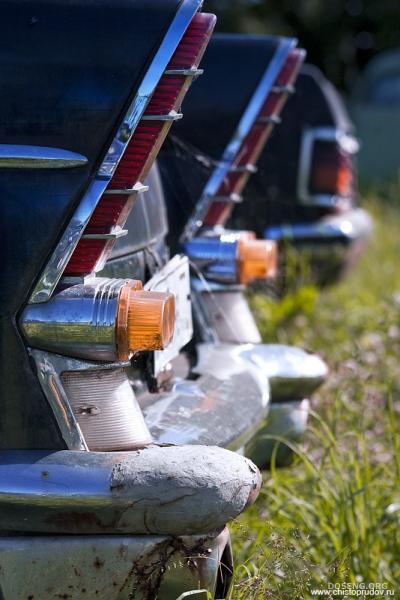
Most of constructive solutions that the machines were novelties in the domestic automotive industry.
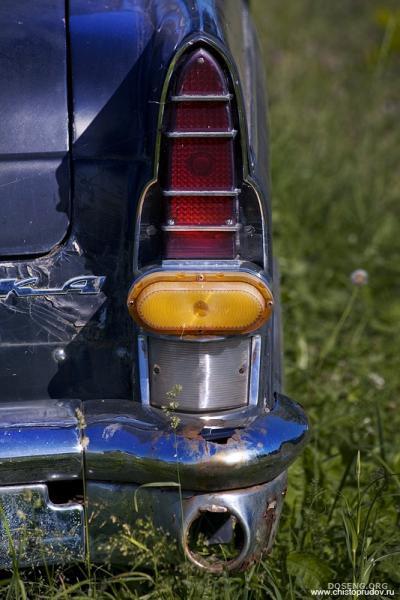
The engine of 5, 5 liters capacity and 195 hp overclock even a fully loaded car to 160 km / h and spend a hundred kilometers just 21 liters of fuel.

Subsequently, several modified form, these motors were mounted on armored personnel carriers.
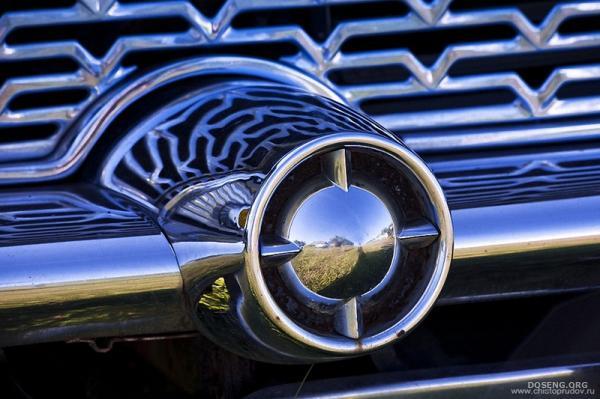
Ambulance on the basis of the versatile "GAZ-22».
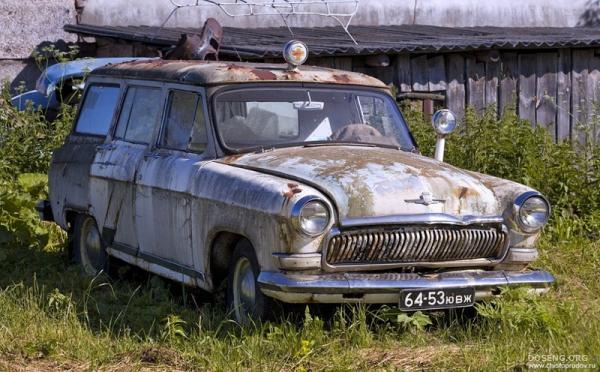
Two "Ford Taunus' 17M and 12M.

«Mercedes Benz W108» '64 and "Volga-24".
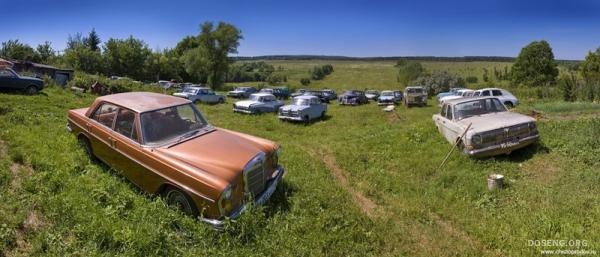
The interior of "Victory." In finishing salon tradition of those years used soft pastel colors - beige, brown, gray. Massive plastic pad attached panel modern, neat appearance. Plastic can be gray, ivory or brown, from the same plastic and leather were performed, various arms and buttons. The panel contains a very complete, at the time, a set of instruments - speedometer, fuel gauge, pressure gauge, ammeter, thermometer, indicator lights left and right turns, movement with automatic winding. As accessories can be ordered: two sun visors, two ashtrays, cigarette lighter, ceiling light, portable lamps, rear-view mirror and two-tone audio Electrosignal.
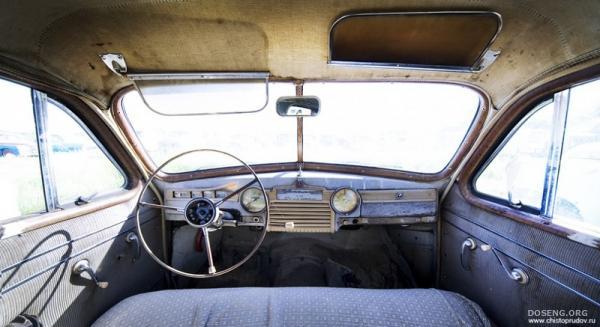
Four-wheel drive station wagon "Moskvich-411".

"Opel Super 6».
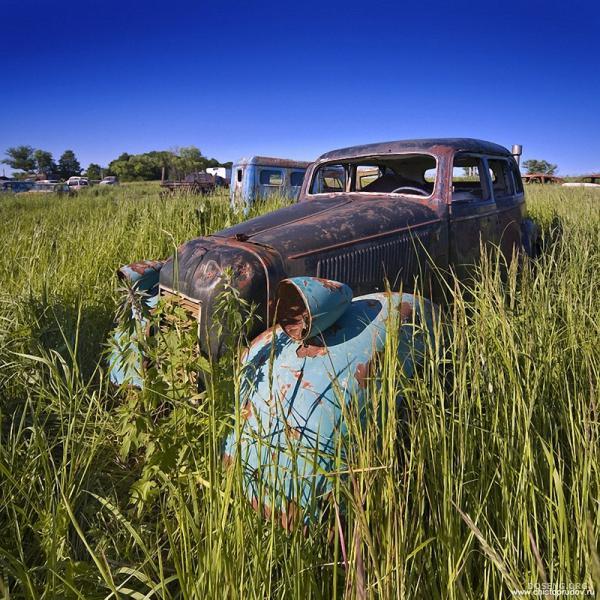
Salon "Moskvich-407" even with a sofa.
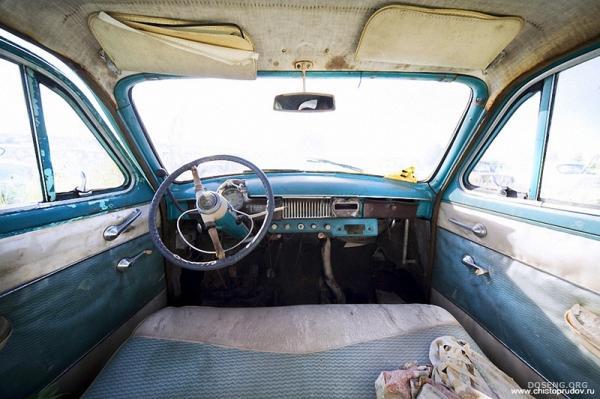
And this is the "Moskvich-408", which are separate seats.

Interior «Winter».
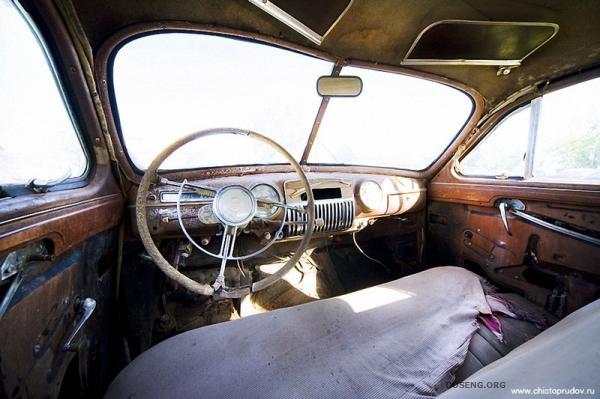
"GAZ-21».
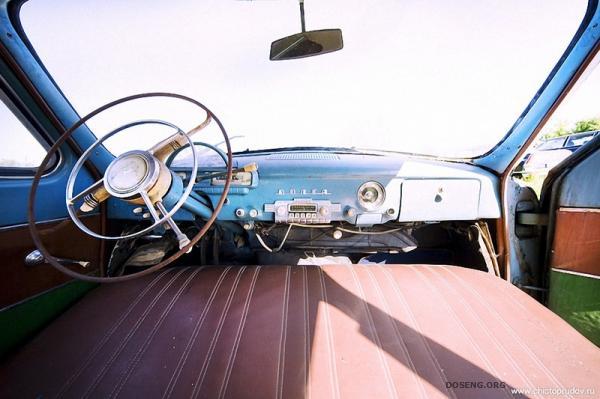
"Ford Taunus»
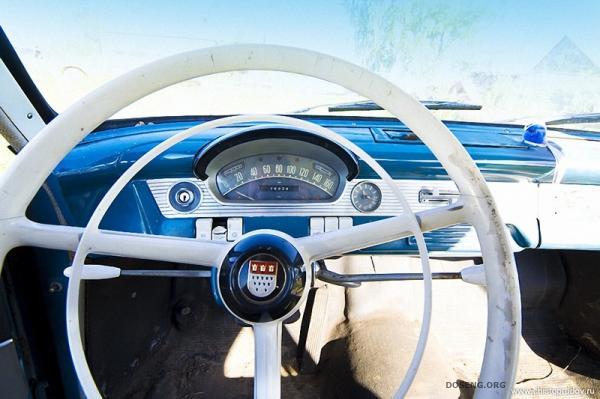
Betmenmobil "Buick Eight" in '39.

As interior can be seen that car for 70 years.
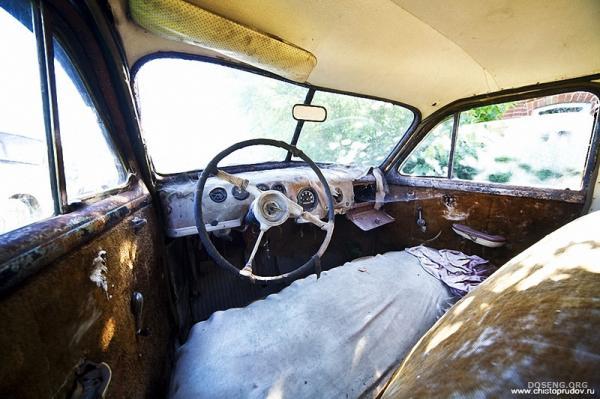
"The Seagull." The spacious and comfortable cabin can easily accommodate seven people. It has a "glove compartment" next to the dashboard, ashtray and elektroprikurivateli, five-band receiver with automatic tuning and additional speakers for the rear passengers, push-button control of the antennas and the panes. In "The Seagull" went heads of ministries and departments, the first secretary of the republican Communist Parties, after the Soviet Union in foreign countries. A "Seagull" even operated in the US Embassy. As a gift from Khrushchev's "The Seagull" was revolutionary Fidel Castro. End-of-age in the ministries and the last two cars were transferred to overhaul the "Intourist", wedding palaces and registry offices.
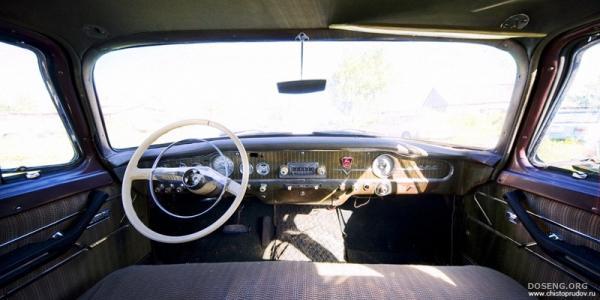

French car "Simca-1501" '68 release.

On the left with the sign - "ZIL-164A", which was issued in 61-65 years. For a long time, these cars were true "workhorses" in almost all fleets of the Soviet Union. On the basis of their specialized plant produces large series vans, tankers, tanks, fire trucks, cranes and many other types of special equipment. Right - "ZIL-157" in the modification of Parma (mobile repair shops). ZIL-157 were produced from 58 to 92 years old, and some of up to 94!

ZIL and Gaza.

Freight car "GAZ-66A" terrain and load capacity of 2 tons. Produced in 64-68 years. Legendary patency due to the use of self-locking differentials, high ground clearance and adjustable pressure in the wheels.

The two-door "Ford Granada" early 80-ies.

Overgrown grass "Moskvich-401", in the background the family jeep.

"Moskvich-402".

"Moskvich-423" - the first in the USSR domestic production car with a five-door station wagon, issued in 57-58 years. Engine power of the first wagon was only 35 hp

Lonely "Victory", GAZ-M 20.

Lonely "Victory", GAZ-M 20.

Another "Moskvich".

The inscription on the back "Police».

ZAZ-965A "Zaporozhets" or export version "Yalta". This first generation of Cossacks, which produces 60 to 69 c of the year. In the USSR, this car was popular in large part due to the relatively low cost (around three thousand Soviet rubles). In addition, "The Cossacks" differed good cross due to large ground clearance, smooth, flat bottoms and increased load on the driving axle. An interesting feature - the windscreen and the rear window "plows" are used interchangeably. Maximum engine power - 27 hp when the working volume - 887 cc.

"Moskvich-400". The car is a copy of the pre-war "Opel-Kadett K38". After the war, part of the equipment has been taken out from the factory "Opel" in Rüsselsheim, and the remaining stamps did plant VMS. The rear doors are opened against the motion, not by state standards. "Moskvich-400" was the first in the Soviet Union truly mass people's car, designed primarily for individual owners. In the frame of one of the cars park implements (Department traffic control).

In the postwar years with the launch of production at GAZ-M20 "Victory" was raised by the establishment of new domestic luxury all-terrain vehicle. SUV, called the GAZ-M72, was based on a body "Victory" units of the army and all-terrain vehicle GAZ-69. From the "Victory" for this car were taken only external body panels and a supporting body structure, which was modified and further strengthened.

GAZ M-21, the legendary "Volga".

A beautiful view of the Volga.

Another "Zaporozhets».

Zaporozhets and Muscovites.

402 and 407 Muscovites. Serial production of "Moskvich-402" was launched in April 1956. For the first time in our automotive industry were used tselnognutye panoramic windshield, telescopic shock absorbers, push-button opening the door locks, unlocks the trunk lid from the inside and dvuspitsevoe steering wheel. The front seats are displayed in a comfortable bed, and the trunk had a large enough amount of - 0, 34 m³. All vehicles were equipped with radio receiver tube range of long and medium waves. Engine power 402nd was 35 hp 407-I model went into production in May 1958, with more than 1960 small and became strong grille. A number of cars for the first time among domestic models have received a two-tone body color, and as a consequence - a good chance for export. After a fairly successful modernization of the engine, the power of which could bring up to 45 hp, the dynamics of the car has improved significantly, and the top speed increased from 105 to 115 km / h.

A small number of "Moskvich-408" made in Izhevsk, and under the brand name "Rila-1400" car produced under license in Bulgaria.

"Opel Rekord C" - one of the rulers of the West German executive cars 67-71 years of release.

"C-3A" subcompact car and microcar 58-70 years of release. It has a tubular space frame and a single cylinder two-stroke motorcycle engine capacity of 10 l / s.

Another microcar - "FDD". Her 18-horseness engine was quite frankly weak for heavy construction of 500 kg and published at the extremely unpleasant crackling.

No one pedal.

Single 401st.

Among Muscovites is one of a kind "Wave-407F" - a homemade car made of fiberglass-based "Moskvich-407».

Help on the road.

"GAZ-12" or "12-ZIM" - Soviet six-seven-seater car with a body of a large class "shestiokonny long wheelbase sedan." C produces 50 to 60 year. "Winters" - the first representative model of the Gorky Automobile Plant. The car is intended primarily for government and party officials. Private cars were very small, although they freely sold, but the price is about 36,000 rubles was for the vast majority of Soviet citizens is enormous.

The emblem of the Soviet taxi.

The emblem of the car "GAZ».

The emblem of the Gorky Automobile Plant to "ZIM-12."

Decorative elements of the "Moskvich-407" on the trunk lid.

... And on the hood.

"GAZ-13" 59-81 years of release.

The famous "The Seagull" was precarious as the design, and the abundance of technical innovations.

Most of constructive solutions that the machines were novelties in the domestic automotive industry.

The engine of 5, 5 liters capacity and 195 hp overclock even a fully loaded car to 160 km / h and spend a hundred kilometers just 21 liters of fuel.

Subsequently, several modified form, these motors were mounted on armored personnel carriers.

Ambulance on the basis of the versatile "GAZ-22».

Two "Ford Taunus' 17M and 12M.

«Mercedes Benz W108» '64 and "Volga-24".

The interior of "Victory." In finishing salon tradition of those years used soft pastel colors - beige, brown, gray. Massive plastic pad attached panel modern, neat appearance. Plastic can be gray, ivory or brown, from the same plastic and leather were performed, various arms and buttons. The panel contains a very complete, at the time, a set of instruments - speedometer, fuel gauge, pressure gauge, ammeter, thermometer, indicator lights left and right turns, movement with automatic winding. As accessories can be ordered: two sun visors, two ashtrays, cigarette lighter, ceiling light, portable lamps, rear-view mirror and two-tone audio Electrosignal.

Four-wheel drive station wagon "Moskvich-411".

"Opel Super 6».

Salon "Moskvich-407" even with a sofa.

And this is the "Moskvich-408", which are separate seats.

Interior «Winter».

"GAZ-21».

"Ford Taunus»

Betmenmobil "Buick Eight" in '39.

As interior can be seen that car for 70 years.

"The Seagull." The spacious and comfortable cabin can easily accommodate seven people. It has a "glove compartment" next to the dashboard, ashtray and elektroprikurivateli, five-band receiver with automatic tuning and additional speakers for the rear passengers, push-button control of the antennas and the panes. In "The Seagull" went heads of ministries and departments, the first secretary of the republican Communist Parties, after the Soviet Union in foreign countries. A "Seagull" even operated in the US Embassy. As a gift from Khrushchev's "The Seagull" was revolutionary Fidel Castro. End-of-age in the ministries and the last two cars were transferred to overhaul the "Intourist", wedding palaces and registry offices.


